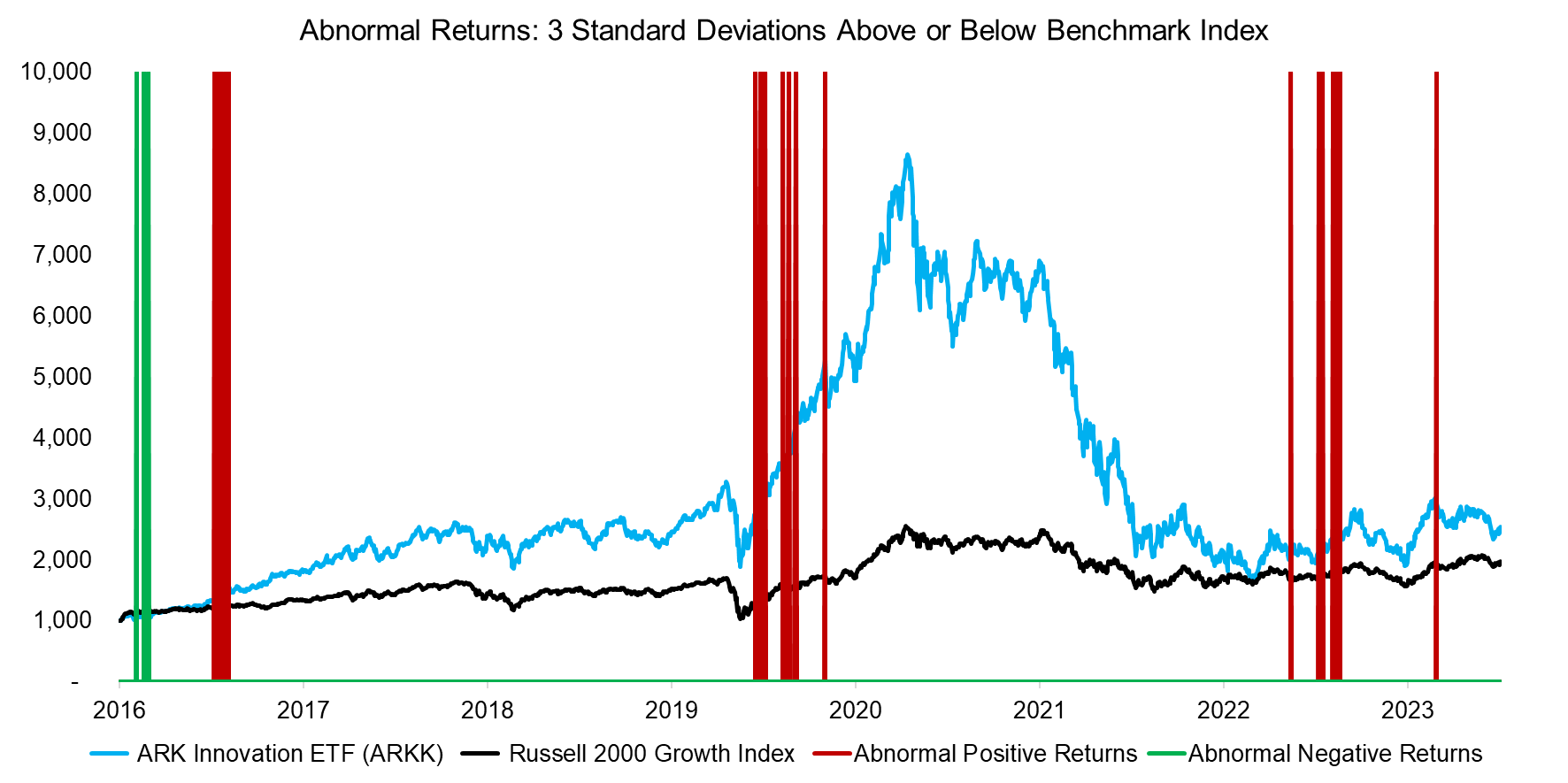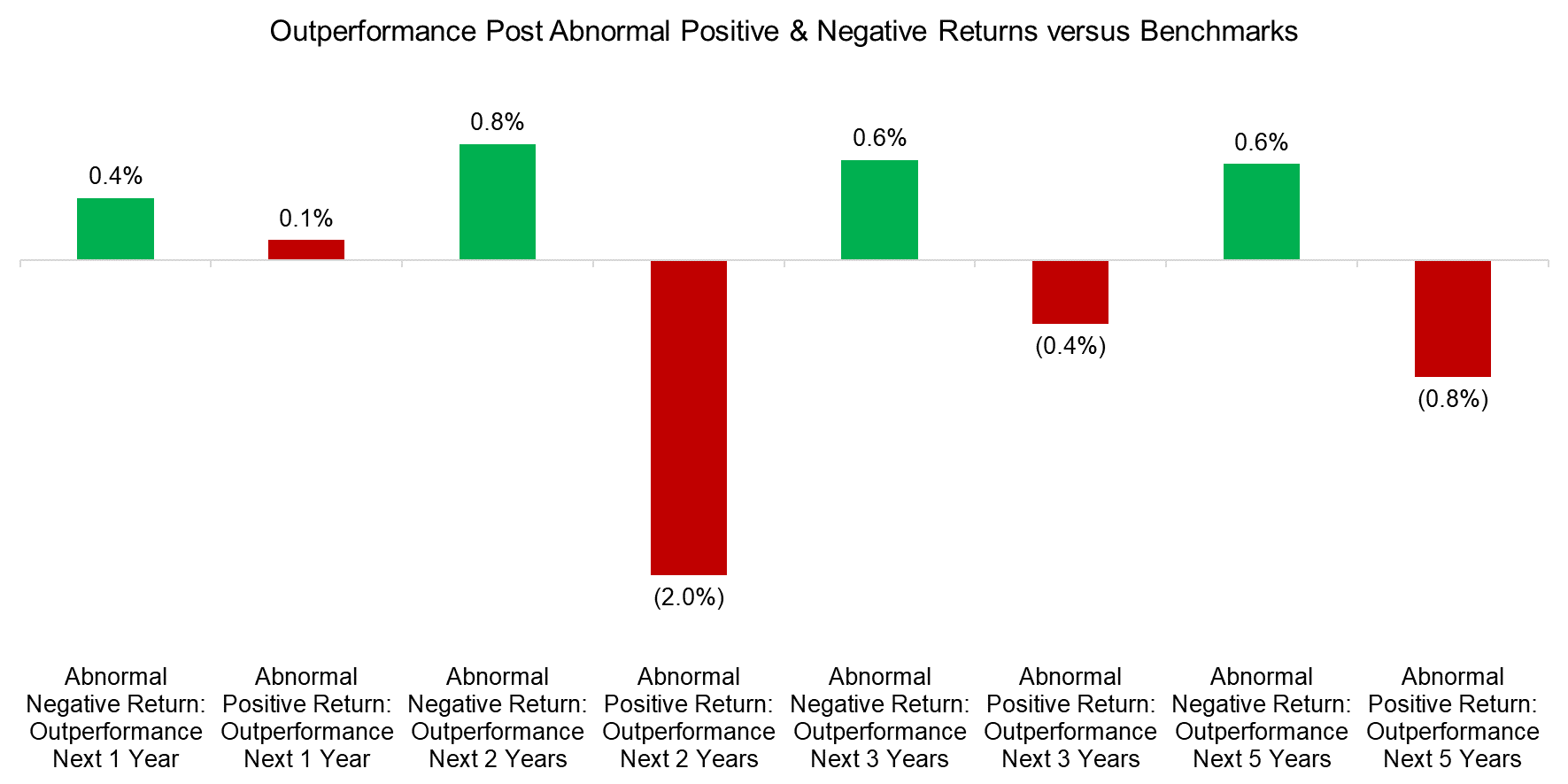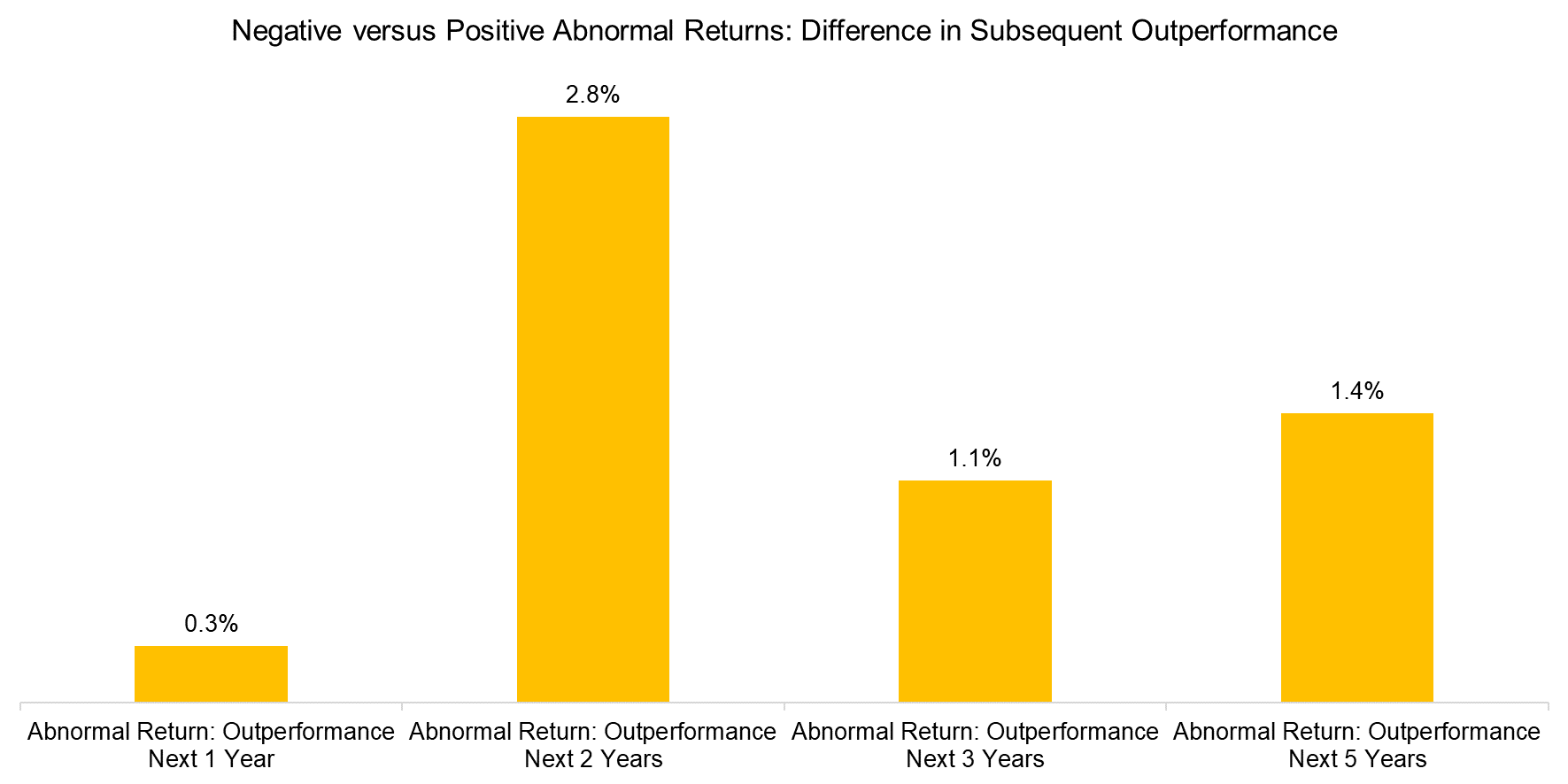Measuring Performance Chasing
Sell the winners & buy the losers
June 2024. Reading Time: 10 Minutes. Author: Nicolas Rabener.
SUMMARY
- Performance chasing can be measured via extreme excess returns
- Abnormal negative returns lead to subsequent outperformance
- While abnormal positive returns lead to subsequent underperformance
INTRODUCTION
Morningstar recently published a list highlighting the top 10 fund management companies that destroyed the most wealth in the decade ending in 2023, which includes boutique firms like Roundhill Investments and large banks like Barclays. The wealth-destroying products of these asset managers can broadly be categorized into short strategies, Chinese equities, VIX proxies, and thematic investing.
The first three of these categories represent market exposures and calling out ProShares for providing a short product on the Nasdaq seems somewhat unfair as that product is expected to lose when stock markets gain.
However, it is more challenging to overlook the massive wealth destruction of thematic products like the ARK Innovation (ETF), which destroyed $7.1 billion as per Morningstar. In 2021, ARKK represented the typical combination of a seducing narrative, namely investing in disruptive companies, and strong outperformance. The ever-present fund manager, Ms Cathie Wood, marketed the hell out of this product, but is not particularly skilled at investing, so the majority of investors are now sitting on an 80% loss (read An Anatomy of Thematic Investing and Thematic Investing: Thematically Wrong?).
In this research article, we will demonstrate that performance chasing leads to poor returns and how investors can identify such funds.
MEASURING ABNORMAL RETURNS
There are various ways of measuring abnormal returns and some funds like statistical arbitrage funds focus exclusively on identifying securities that exhibit extremely positive or negative returns on a relative basis. We define abnormal returns as when the 12-month excess return is more or less than three times the tracking error from the average 12-month excess return. The tracking error is calculated as the standard deviation of the difference in returns between a fund and its benchmark.
Abnormal returns can therefore be positive or negative, where the assumption is that positive abnormal returns lead to subsequent underperformance and negative abnormal returns to outperformance as mean-reversion occurs (read Chasing Mutual Fund Performance).
Taking ARKK as a case study, we observe that the ETF exhibited only a few periods in 2016 where the fund had abnormal negative returns, but plenty of periods of abnormal positive returns in 2017, 2020, 2023, and 2024.

Source: Finominal
OUTPERFORMANCE POST PERFORMANCE CHASING
We test our framework on a universe of 338 equities-focused ETFs trading in the U.S. with at least 10 years of track record. We compute the one to five-year subsequent outperformance from any given day where the funds showed abnormally positive or negative returns.
We observe that funds outperformed their benchmarks for all time periods after having featured abnormally negative returns, which confirms that mean-reversion taking place. In contrast, we do see that funds with abnormal positive returns outperformed slightly over the next year, but underperformed in the years thereafter.

Source: Finominal
Finally, we aggregate the results and show the difference in subsequent outperformance between negative and positive abnormal returns. We observe that this spread was consistently positive across all periods. This indicates that investors should avoid funds with abnormal positive performance but seek ones with abnormal negative returns.

Source: Finominal
FURTHER THOUGHTS
Unfortunately, we are suckers for stories and chasing performance becomes risky when combined with a seductive narrative as that leads investors to allocate at peaks and hold on for too long.
However, if done systematically, then chasing performance becomes a wonderful strategy for allocating capital, e.g. via momentum or trend following funds (read Thematic versus Momentum Investing).
RELATED RESEARCH
Thematic versus Momentum Investing
An Anatomy of Thematic Investing
Thematic Investing: Thematically Wrong?
Thematic Indices: Looking at the Past or the Future?
Chasing Mutual Fund Performance
REFERENCED RESEARCH
15 Funds That Have Destroyed the Most Wealth Over the Past Decade, Morningstar, 2024
ABOUT THE AUTHOR
Nicolas Rabener is the CEO & Founder of Finominal, which empowers professional investors with data, technology, and research insights to improve their investment outcomes. Previously he created Jackdaw Capital, an award-winning quantitative hedge fund. Before that Nicolas worked at GIC and Citigroup in London and New York. Nicolas holds a Master of Finance from HHL Leipzig Graduate School of Management, is a CAIA charter holder, and enjoys endurance sports (Ironman & 100km Ultramarathon).
Connect with me on LinkedIn or X.

